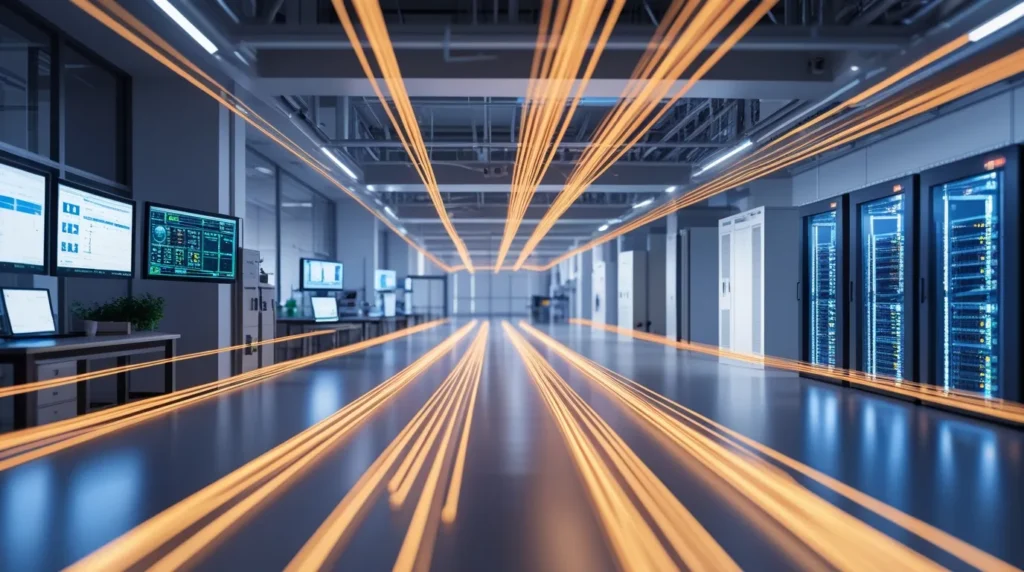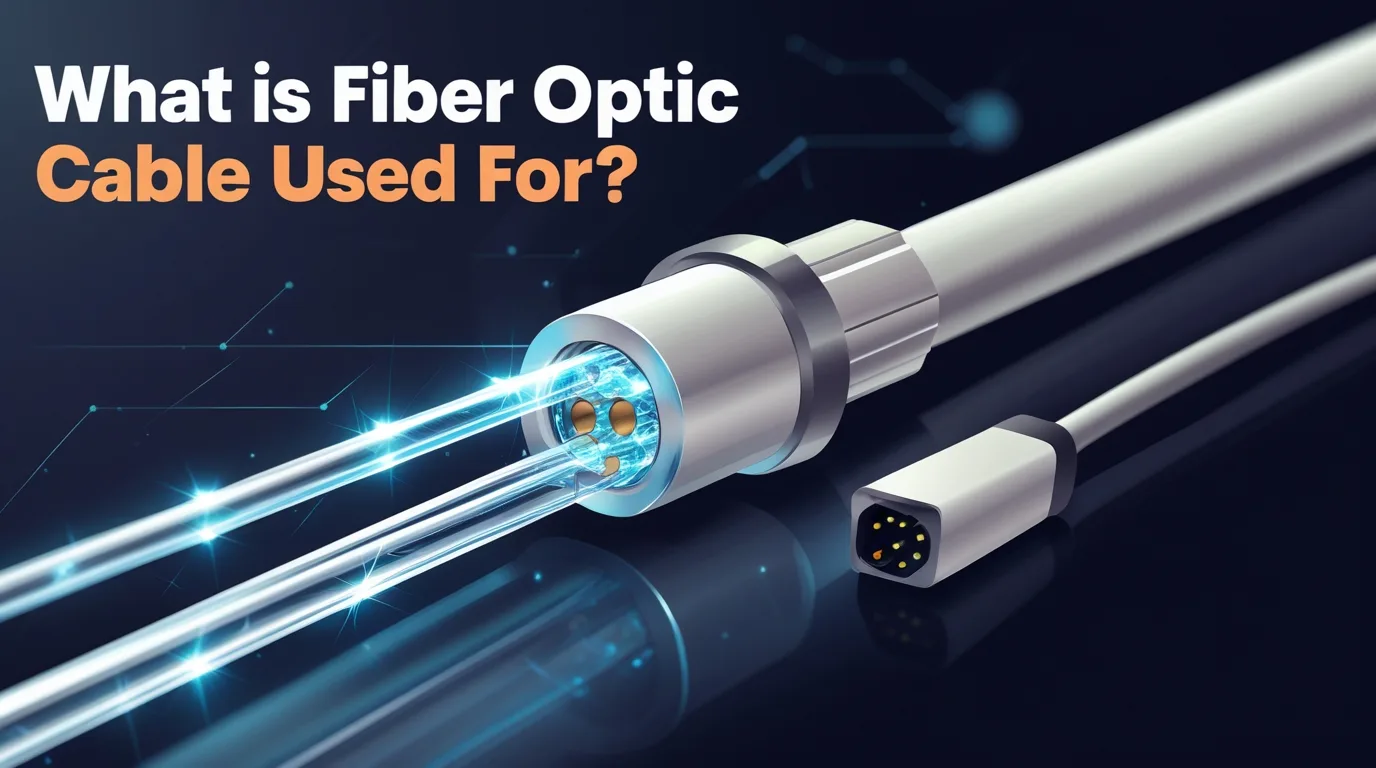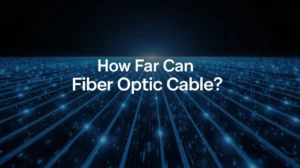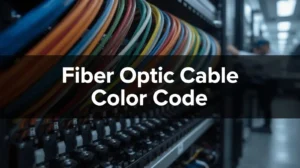Introduction to Modern Cable Technology
When people first hear the phrase “what is fiber optic cable used for,” they may picture shiny glass threads or bright laser-like lights, but they might not know why this wiring matters in daily life. Over the past fifty years, cables have changed from thick copper lines to hair-thin strands of glass that carry voices, videos, and data at the speed of light. In this opening section, we look back at old telegraph wires, telephone cords, and coax lines to see how each step in technology solved one problem yet created another—slowness, noise, or bulky size. Fiber optics answered those issues by moving light through ultra-pure glass. We will explore how this simple idea—light in a strand—became a keystone for today’s hyper-connected world, from streaming classes at school to doctors guiding robots in surgery. By understanding the path of cable innovation, readers can see why the next sections focus on practical uses that touch every part of modern life.
Why Communication Infrastructure Needs an Upgrade
Every year our homes, offices, and city services push more data through the air and through wires. Video calls, game downloads, remote work files—all demand larger lanes and clearer signals. Old copper wires send electrical pulses that slow down over long distances and suffer from outside noise. Power lines, elevator motors, even thunderstorms can scramble those signals. Fiber-optic strands, in contrast, send light that almost never fades and is immune to magnetic buzz. Light also travels much faster than electricity inside a conductor. As we install more smart devices—door cameras, energy meters, classroom tablets—the need for quick and steady links keeps growing. Investing in fiber now builds a backbone strong enough for future tools like mixed-reality lessons, driverless buses, and cloud-guided farming drones. Upgrading may cost money up front, but the long-term gains—lower repair bills, less downtime, and a network ready for next-generation services—make the choice clear.
What Is Fiber Optic Cable Used For in Everyday Life?

You might be surprised how often invisible glass fibers help your day run smoothly. When you send a message to a friend, the phone tower quickly hands it to a fiber line buried under the street. Streaming your favorite cartoon? The show leaves a server, races down long-haul optical pathways, hops onto a local fiber loop, and finally reaches your TV or tablet. Community hospitals send X-ray images to specialists miles away within seconds, letting doctors act sooner. Banks rely on fiber links between branches to post deposits instantly and guard against fraud with real-time checks. Even traffic lights at busy intersections talk to one another over fiber so they can adjust timings and reduce jams. Though the strands hide under sidewalks and ceilings, they carry nearly every digital task we now treat as routine.
Key Fiber Optic Cable Uses Across Different Industries
Here are some important ways fiber optic cables are used in different fields:
- Schools and Colleges
Fiber helps teachers connect with students in far places through video calls and online classes. - Theme Parks and Events
Shows and rides use fiber cables to run smoothly and on time. - Factories
Machines are checked using fiber sensors to stop problems before they happen. - Farms
Cameras and soil tools send information to farmers, helping them grow better crops. - Oil and Gas Rigs
Deep ocean cables send live data to workers on land to keep rigs safe. - Emergency Services
Fire trucks and police cars stay connected during storms because fiber stays working when others don’t.
Fiber is used everywhere because it’s fast, strong, and can carry lots of information all at once.
How Fiber Optic Cables Improve Network Performance

Speed is the first benefit people notice, yet performance is more than raw velocity. Light signals inside fibers face very little resistance, so they can travel dozens of miles before needing a boost, unlike copper that may need repeaters every few thousand feet. Low signal loss means fewer electrical boxes, fewer points of failure, and smaller maintenance crews. Fibers also provide enormous bandwidth. One standard strand can handle many terabits per second by using multiple light colors at once. Even if a neighborhood suddenly doubles its video calls, the line rarely becomes a bottleneck. Security improves too: hacking a fiber requires cutting into the sheath and bending glass enough to leak light—actions that trigger alarms or break the link outright. Together, these traits create a network that is fast, steady, and hard to tap, which is why telecom carriers choose fiber for critical trunks and data-center interconnects.
What Does an Optical Cable Actually Do?
Let’s break down what an optical cable does step by step:
- Sends Light Signals
A small light at one end (like a laser or LED) turns digital info into fast flashes of light. - Carries the Light Through Glass
The light moves through a glass strand that keeps it bouncing inside without escaping. - Stays Clean and Fast
Because it’s glass and sealed tight, the signal doesn’t slow down or get messy. - Changes Light Back to Data
At the other end, the light is turned back into numbers that computers or TVs can read.
Optical cables do one main job—move light carrying data from one place to another super fast and without getting mixed up.
The Advantages of Fiber Optic Cable Over Traditional Wiring
Let’s list the major advantages of fiber optic cable in plain terms. First, capacity: a single strand can hold far more data than a whole bundle of copper pairs. Second, distance: signals can travel tens of miles without extra power, lowering costs and keeping rural zones connected. Third, immunity to electromagnetic interference: nearby power lines, lightning, or even solar flares do not disturb light pulses. Fourth, security: light leaks are easy to spot, and cutting the fiber snaps the link, signaling tampering. Fifth, weight and size: fibers are thinner than a human hair, making cables light and easy to pull through tight conduits. Sixth, durability: glass resists corrosion, and outer jackets stand up to moisture and extreme temperatures. Together these traits explain why new city builds skip copper entirely and why older campuses slowly replace legacy wires with fiber trunks that will last for decades.
How Fiber Optics Power Modern Telecommunications

Telecom providers depend on fiber for everything from backbone lines between continents to last-mile links to apartment buildings. Under oceans, gigantic cables as thick as garden hoses house dozens of glass pairs wrapped in steel and plastic. Repeaters placed every few tens of miles refresh the signals, letting light trek thousands of miles beneath waves. Above ground, metro rings circle cities, feeding cell towers and public Wi-Fi spots. Carriers partition wavelengths to lease space to streaming firms and research labs, proving fiber’s flexibility. Voice calls, cloud backups, and live sports reach fans through the same strands. As 5G and upcoming 6G wireless standards demand ever faster backhaul, fiber remains the only medium able to match the pace. Without it, smartphones would stall, and national grids of sensors for weather or traffic would lag.
The Role of Optical Cables in Smart Homes and IoT
Smart doorbells, thermostats, and security cams all chat with remote servers to learn, update, and warn. While Wi-Fi or Bluetooth covers short indoor hops, a solid fiber link delivers their aggregated traffic to the web without hiccups. Families stream movies in 4K while video-chatting grandparents; fiber prevents buffering circles that copper lines cannot avoid under the same load. For builders, installing fiber from street to utility panel adds resale value because buyers see it as future-proof. Cities running “smart streetlights” use optical fibers in lampposts to send live power readings and dim lights when roads are empty, saving energy. In farming, fiber connected to edge computers lets drones map crops and send real-time images to growers’ phones. As more everyday objects talk to each other, the quiet strength of optical glass keeps the chatter smooth and quick.
Fiber Optic Cable Solutions by Heritage Cables in Dallas, TX
Local projects need partners who know the streets, permits, and soil conditions. Heritage Cables designs, installs, and tests fiber networks for schools, hospitals, and small businesses across the metro. Our crews survey venues, choose the right single-mode or multimode strands, and route them to avoid future utility digs. We splice with precision tools and verify each link with optical-time-domain reflectometers so clients start with error-free circuits. Whether upgrading a campus backbone or adding a backup line between data closets, we tailor solutions to budget and growth plans alike. By using bend-insensitive fibers and armored jackets in parking lots, we ensure longevity even under heavy traffic. Clients can count on quick response if a construction mishap cuts a line, because our warehouse stocks matching patch cords and connectors for rapid swaps.
Final Thoughts: Why Fiber Optics Are the Future of Connection
Fiber optics may hide under floors and seas, yet they shape how we learn, heal, and play. From faster homework uploads to remote surgeries guided with millisecond precision, glass strands carry tomorrow’s dreams today. Copper served its era, but the world’s thirst for data now outpaces what electricity in metal can offer. Light in glass brings huge capacity, long reach, solid security, and energy savings, making it the clear path forward. As new apps—holographic calls, AI-driven traffic control, immersive classrooms—emerge, fiber gives them a runway to soar. The question is no longer whether to adopt fiber but how soon each community can finish the swap and unlock the benefits.
Need expert help planning or upgrading your network? Reach out to Heritage Cables and let our team craft a fiber solution that keeps you connected and future-ready.




